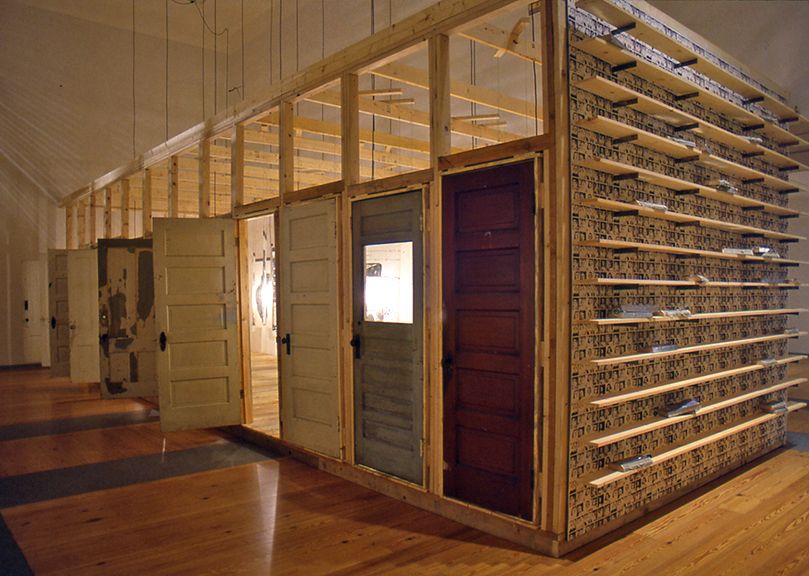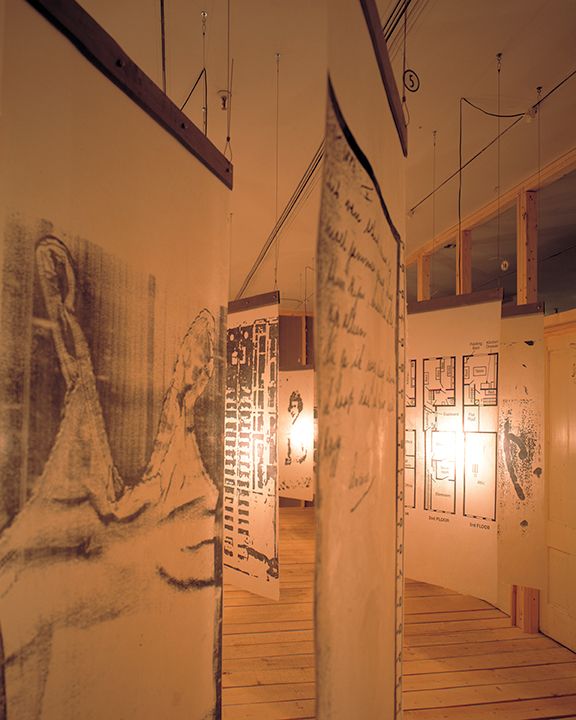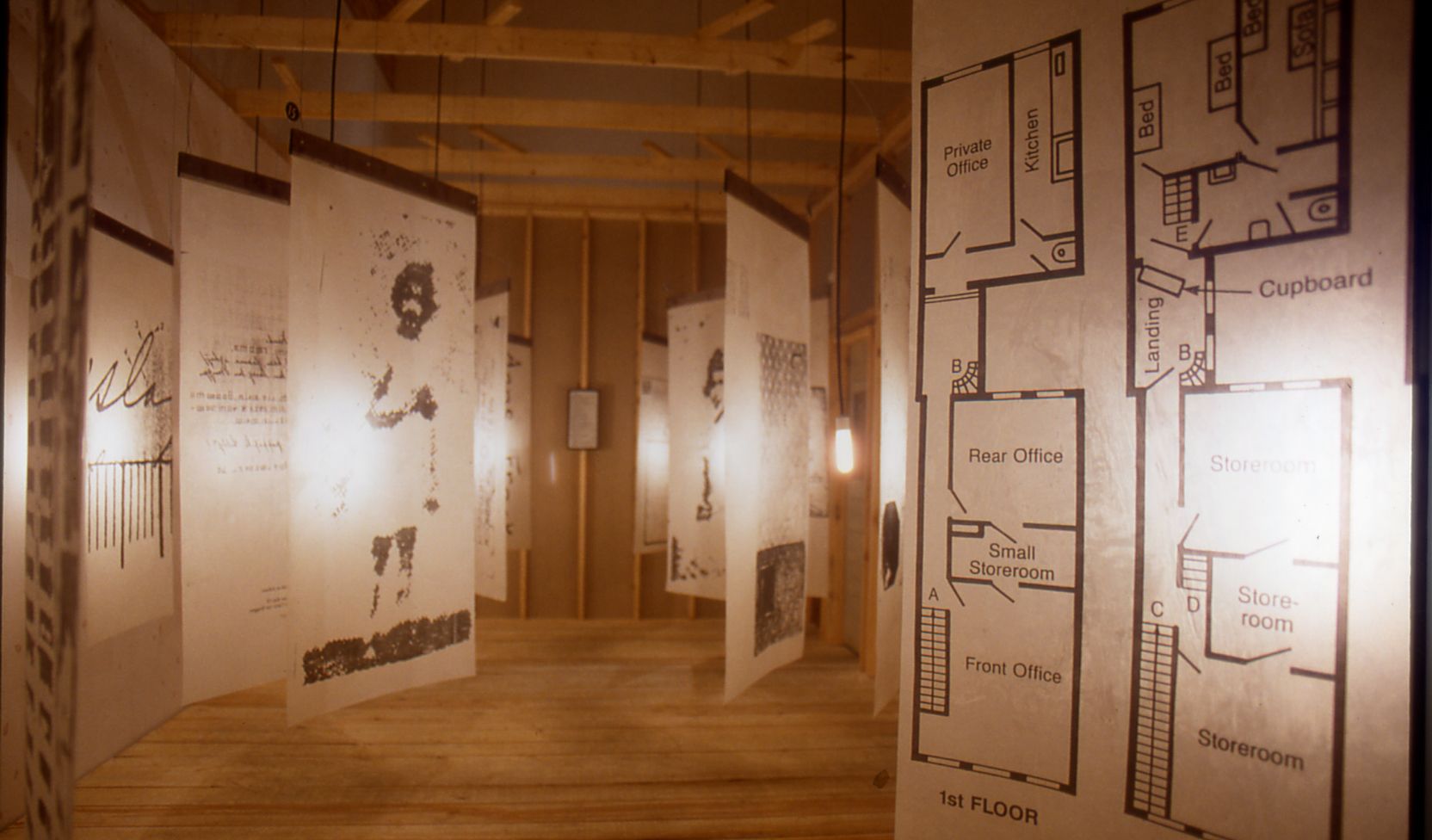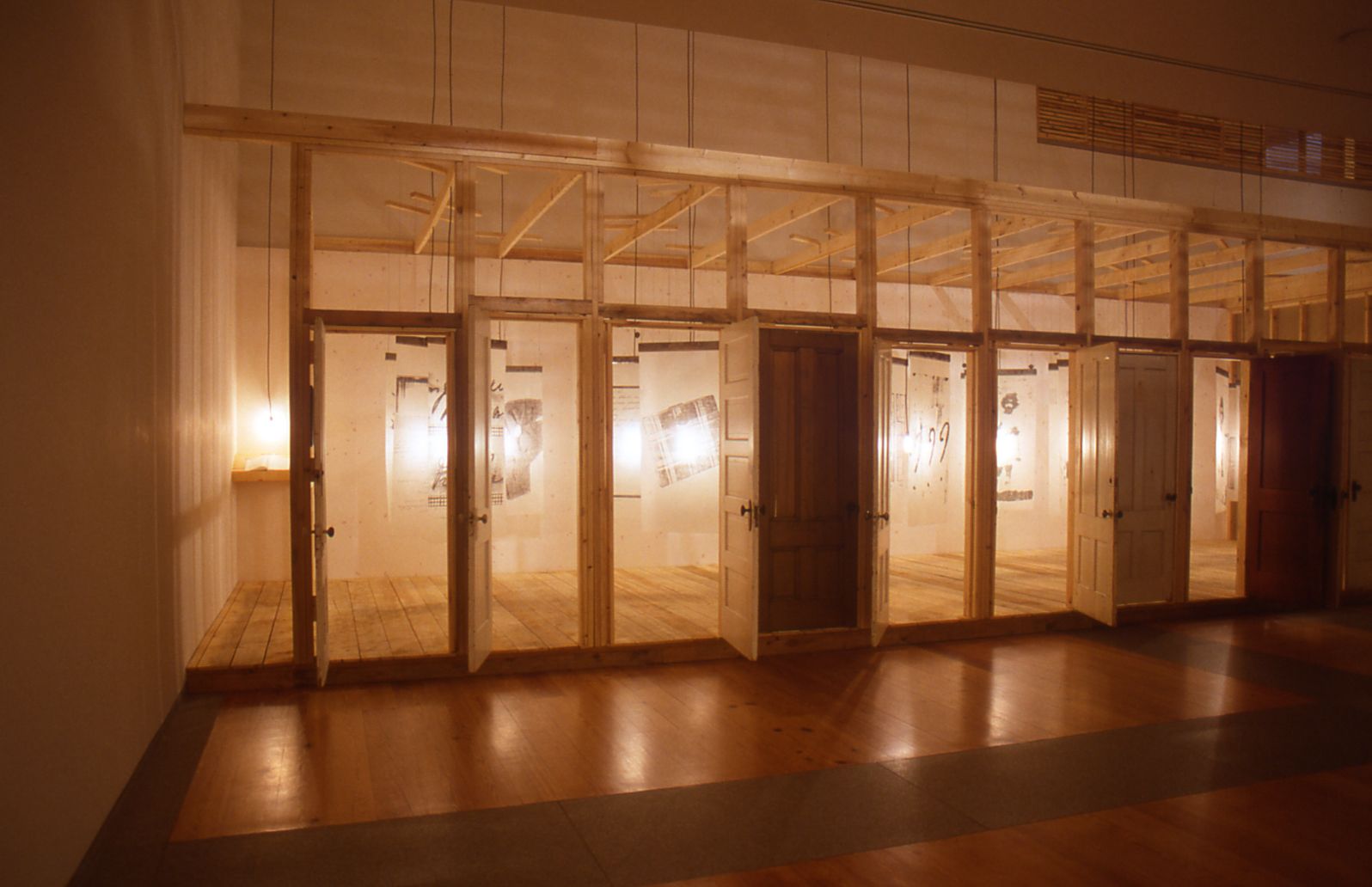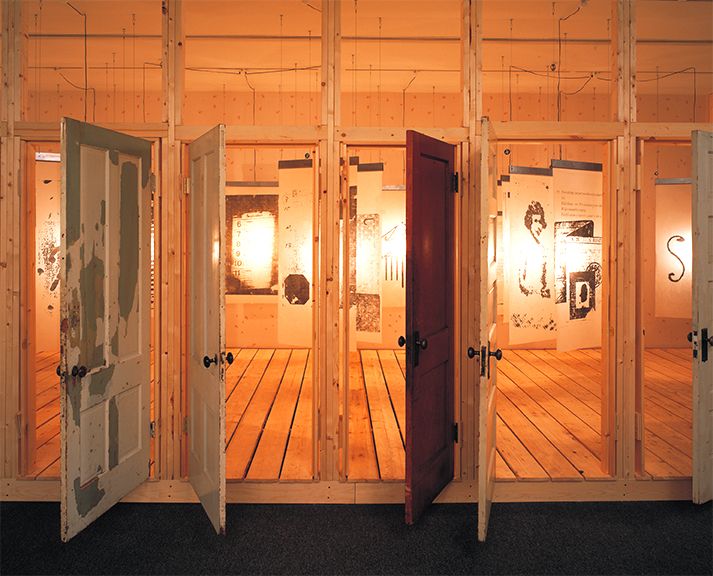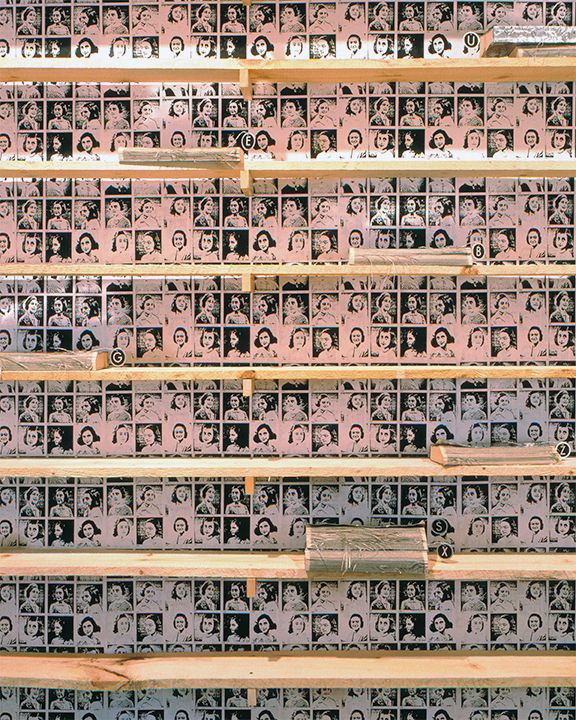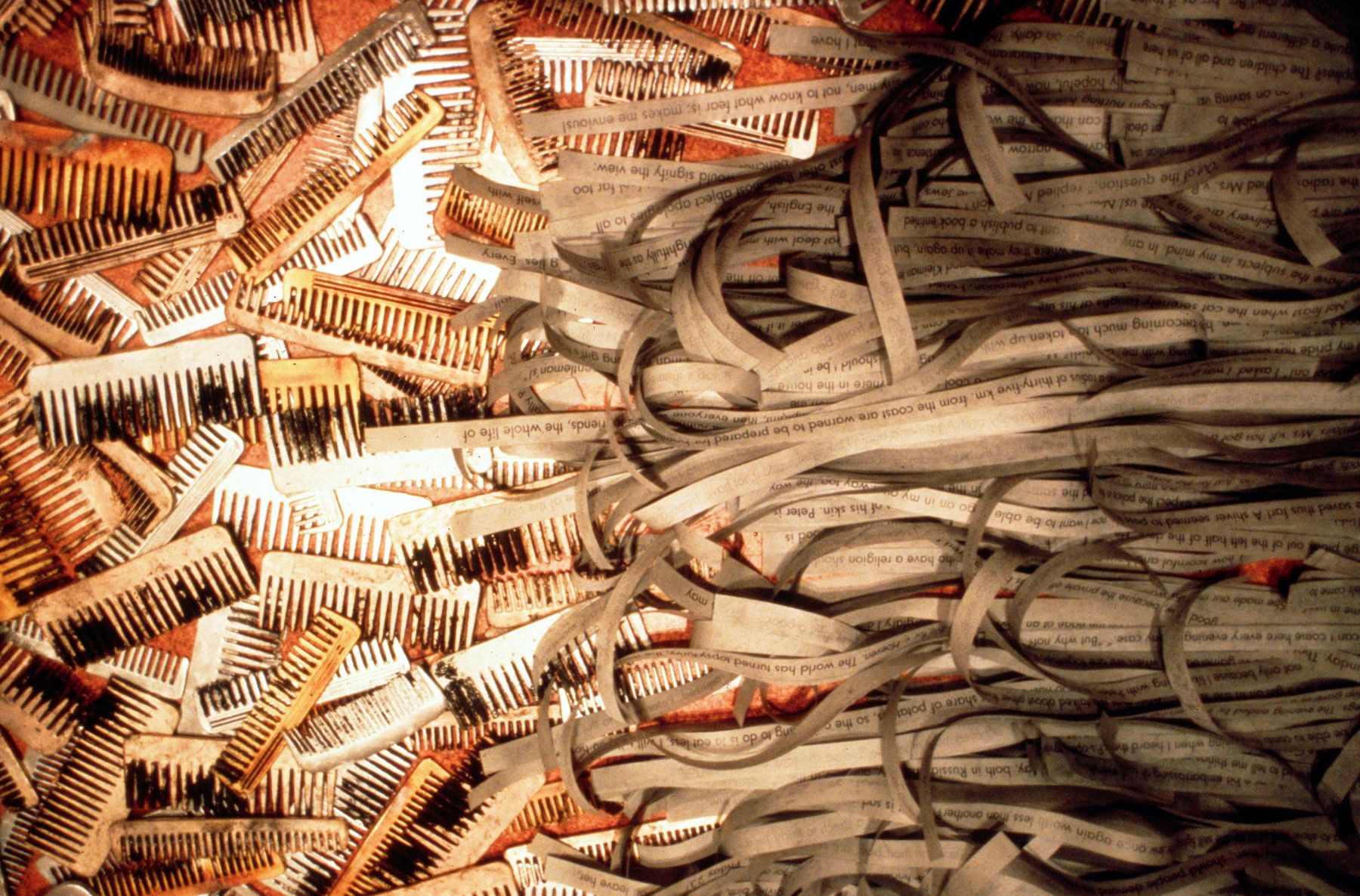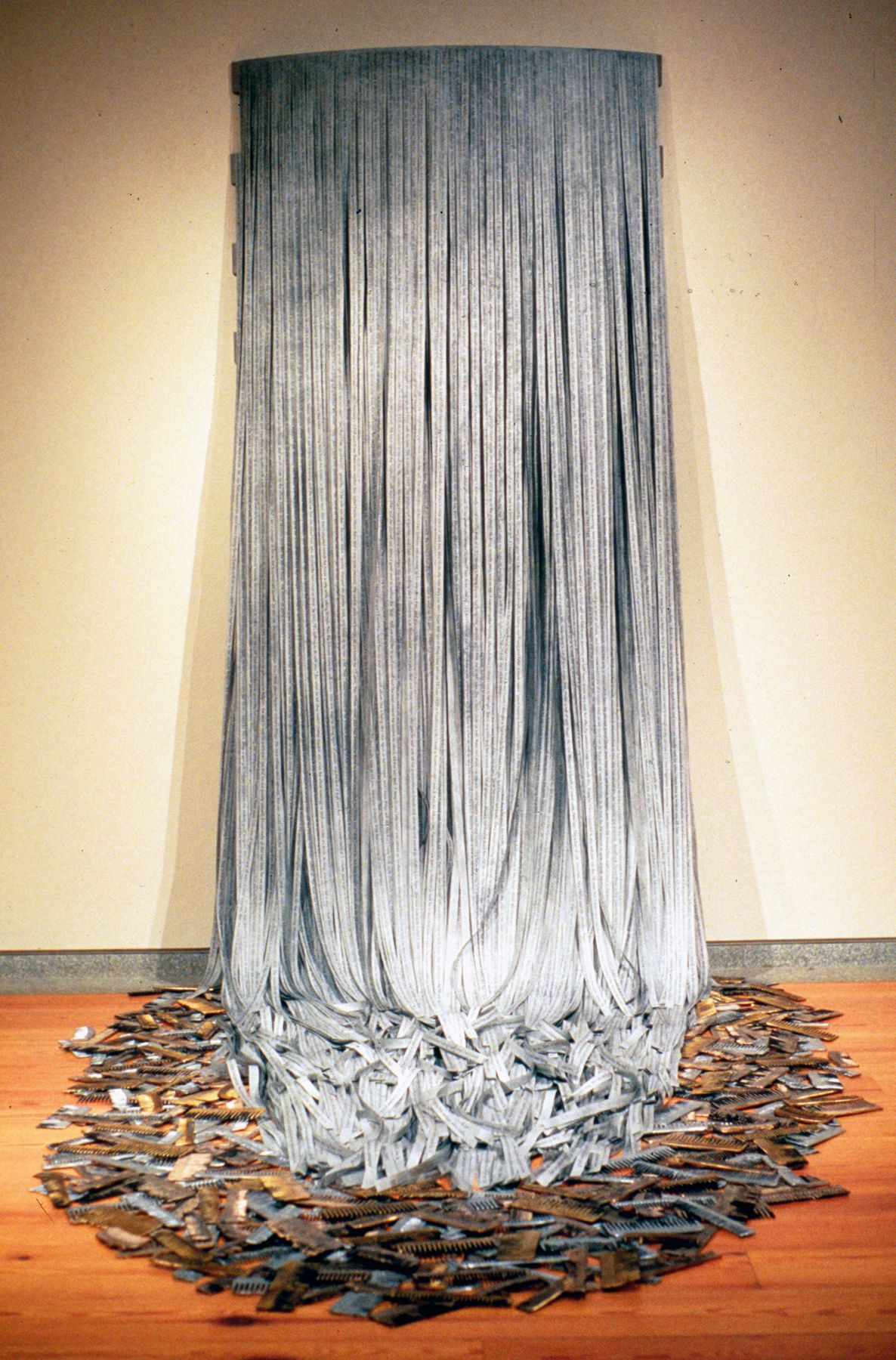Ellen Rothenberg: The Ann Frank Project
December 4, 1993 – February 19, 1994
In the Archeology of Knowledge (1972) Michel Foucault proposes that we abandon notions of history as fixed — focused on a single meaning or unified account — and instead think in terms of rupture and discontinuity, of the interruptions and displacements that underlie assumptions of continuity and homogeneity. Thinking in this way forces us to concede that the past is never static, but shifts with every representation of it, that it’s meanings are to be located in it’s silences and absences, in its uncertainties and ambiguities, as well as in it’s solid homogeneous manifestations. It is this notion of history that motivates Ellen Rothenberg’s, Anne Frank Project... Whitney Chadwick - from “Ellen Rothenberg: A Probability Bordering on Certainty,” Exhibition Publication, The Bunting Institute of Radcliffe College
Kent Gallery is pleased to present the gallery’s inagural exhibition featuring Ellen Rothenberg: The Anne Frank Project, a three-part installation, transforms the way history and artifacts are conventionally considered. The installation questions the social construction of Anne Frank, the person behind the myth, as separate from the accumulated cultural history of the “Diary.” Formally, the slippage between text and body, artifact and representation, memory and its social mechanisms, form essential spaces of The Anne Frank Project.
The installation is flexible and can be shown in its entirety or in par ts adaptable to the architectural space of the exhibition venue.
The following text is a description of Partial Index, A Probability Bordering on Certainty, and Conditions for Growth; the three sections of The Anne Frank Project.
Partial Index is an architectural structure, with a wall of doors, it functions as a filing cabinet containing enlarged ‘documents.’ Texts written by Anne Frank but omitted for publication by her father, images of an analysis of her handwriting, floor plans of the hiding place, and photos from the walls of her room. By presenting documentation of various kinds, the distinctions between truth and fiction, denial and falsehood become sharply delineated.
A Probability Bordering on Certainty is a collection of works developed while Rothenberg was living in Berlin during 1991-92. Proximity to the sites of WWII enabled her to do research at The Anne Frank Institute and Museum, and the Netherlands’s Institute for War Documentation. A Probability Bordering on Certainty is not a documentary portrait of a person or a time, but an investigation into the construction of identity and
transforms the way history, artifacts, and documents are conventionally considered.”
Conditions for Growth is the final part of The Anne Frank Project and considers the impossibility of quantifying the experience of The Holocaust. As a departure point, the installation references notations inscribed on the walls of the Secret Annex recording the heights of Anne Frank and the other children. In Conditions for Growth, the exhibition wall becomes a surface of inscriptions. Masses of rulers are suspended above steel footprints and surround industrial scales weighing pillows, pencils, and bread.

